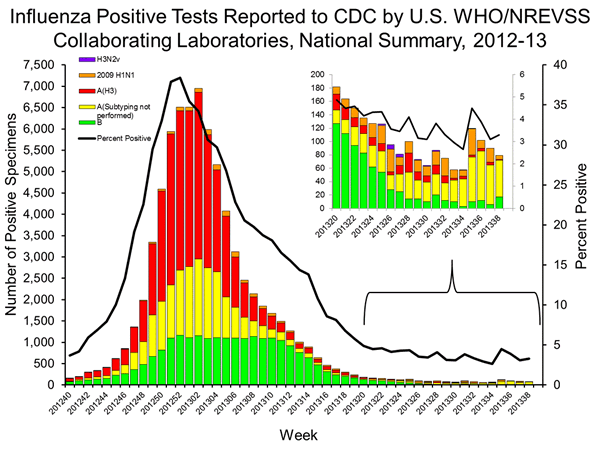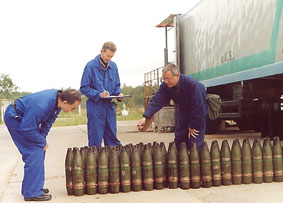From the
BBC: US and UK insist UN chemicals report 'blames Syria'
The US, UK and France say a UN report confirming a chemical weapons attack in Damascus has vindicated their stance that Syria was to blame.
The US and UK ambassadors to the UN said technical details showed only the regime could have been responsible for the 21 August attack. Russia said claims that the rebels were responsible could not be shrugged off.
The report said sarin-filled rockets were fired. Secretary General Ban Ki-moon called it a "despicable crime".
'Jumped to conclusions'The UN report did not attribute blame for the attack, as that was not part of its remit.
Mr Ban was asked at a news conference whether he knew who was behind the attack.
He replied that "we may all have our own thoughts" but it was for "others to decide" what steps should be taken to bring those responsible to justice...
The report describes the team's methods. It estimates the direction the missiles came from and their range. It includes pictures of missile parts that are alleged to have been part of the munitions, and which did contain sarin. It was estimated that the missiles were able to contain up to 50 +/- 6 liters of liquid. Markings are seen on the missile parts, but they are not linked to any nation or parts manufacturer.
The NY Times claims the UN report implicates "Syria," but it fails to implicate the Syrian government. More
Newspeak from the NY Times? See
U.N. Implicates Syria in Using Chemical Arms.
The US government continues to blame Assad for the attack
on the basis that only the government, and not the rebels, could have such sophisticated weapons. Yet the CIA supplied Afghanistan's mujahideen with hundreds of Stinger surface to air missiles (SAMs) in the 1980s, to use against Soviet planes and helicopters. Yes, unsophisticated Afghanis used our sophisticated weaponry, acting as proxies against our enemy and theirs.
Claims have been made that the attack on the Benghazi US embassy had something to do with recovering 400 SAMs. Claims have been made
these or other originally US weapons were intended for Syrian rebels. SAMs are much more sophisticated than the missiles used for the CW attacks.
UPDATE October 8 from BBC: Libya's Prime Minister asks for help securing thousands of SAMS and other weapons loose in Libya.
What is stopping some rebels from obtaining chemical weapons and missiles? Surely both can be purchased. Or transferred. Or supplied by a nation with sophisticated weapons that needs a proxy. In an interview on
Flashpoint, Robert Parry provides reasons to think the Syrian rebels already have chemical weapons.
So far, the evidence has not implicated the guilty party.
UPDATE: More shamelessness as
Obama twists the truth in his 9/23/13 UN speech.








 The 7 States Parties (A State Party, Albania, India, Iraq, the Libyan Arab Jamahiriya, the Russian Federation, and the United States of America) which have declared chemical weapons must destroy 8.67 million items, including munitions and containers containing in total, 71,196 metric tonnes of extremely toxic chemical agents. Albania, India and a third country have completed destruction. By comparison, a tiny drop of a nerve agent, no larger than the head of a pin, can kill an adult human being within minutes after exposure.The OPCW verifies that the destruction process is irreversible. At the same time, States Parties in the process of destroying chemical weapons are obliged to place the highest priority on the safety of people and on protecting the environment.
The 7 States Parties (A State Party, Albania, India, Iraq, the Libyan Arab Jamahiriya, the Russian Federation, and the United States of America) which have declared chemical weapons must destroy 8.67 million items, including munitions and containers containing in total, 71,196 metric tonnes of extremely toxic chemical agents. Albania, India and a third country have completed destruction. By comparison, a tiny drop of a nerve agent, no larger than the head of a pin, can kill an adult human being within minutes after exposure.The OPCW verifies that the destruction process is irreversible. At the same time, States Parties in the process of destroying chemical weapons are obliged to place the highest priority on the safety of people and on protecting the environment. 55,939, or 78.57%, of the world's declared stockpile of 71,196 metric tonnes of chemical agent have been verifiably destroyed. (As at 28/02/2013)
55,939, or 78.57%, of the world's declared stockpile of 71,196 metric tonnes of chemical agent have been verifiably destroyed. (As at 28/02/2013) 3.95, or
3.95, or 









